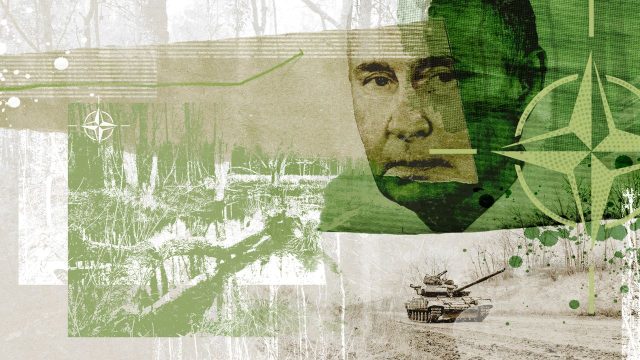
As Europe ramps up defence spending in the face of the growing threat posed by Russia, states on Nato’s eastern flank are turning to a more unusual line of defence: bogs.
“Water has played a role in defensive strategy for millennia,” said the Financial Times. Germanic tribes used peatland to defeat the Romans, while Holland mastered strategic flooding to ward off invasion by Spain and France. The great Prussian military strategist Carl von Clausewitz thought that bogs were among “the strongest lines of defence”.
‘Let nature fight for you’
This was shown to devastating effect in 2022 when, in a desperate bid to stop the Russian army’s advance on Kyiv, Ukrainian authorities decided to blow up a massive Soviet-era dam to the north of the capital that had long contained the Irpin River.
The “desperate gamble” paid off, said The Telegraph, flooding a long-lost wetland basin and turning the land into “an almighty, impassable swamp that helped shield the city as Russian tanks languished in thick, black sludge. The drastic measure sent a message: let nature fight for you in war. Countries along Nato’s frontier took note.”
By chance, “most of the European Union’s peatlands are located on Nato’s border with Russia and Belarus”, said Defence 24. They stretch from the Finnish Arctic, through Estonia, Latvia and Lithuania, across the Suwalki Gap – judged by many to be the most likely point of attack in a future Russian confrontation with Nato – and on to eastern Poland.
Finland has already begun a bog-restoration pilot close to its border with Russia, while Poland plans to revive and expand peatland and forests as part of its £1.9 billion East Shield fortification.
“If there are natural stops on the border such as swamps or bogs or lakes… then that helps us,” said Estonian Prime Minister Kristen Michal.
‘Fusing defence and climate’
Restoring bogs and wetlands along Nato’s eastern flank would be “relatively cheap and straightforward” and fuse “two European priorities that increasingly compete for attention and funding: defence and climate”, said Politico.
Bogs store a huge amount of CO2 and, when drained, release carbon into the atmosphere, fuelling global warming. The problem is particularly acute in Europe, which has seen over half its bogs lost or converted to farmland. Wary of the environmental impact, the EU has set a goal of reviving 30% of degraded peatlands by 2030.
The problem up until now has been securing funding for this. “At a time when Europe focuses on security and resources are allocated to defence”, scientists hope that “acknowledging the military significance of bogs will accelerate their renaturation and secure unprecedented financial resources”, said Defence 24.
“There are not many things that environmental activists and defence officials agree on and here we find great common ground,” Finnish MP Pauli Aalto-Setälä told The Telegraph.
Reviving lost wetland on Nato’s eastern flank would fuse ‘two European priorities that increasingly compete for attention and funding: defence and climate’




